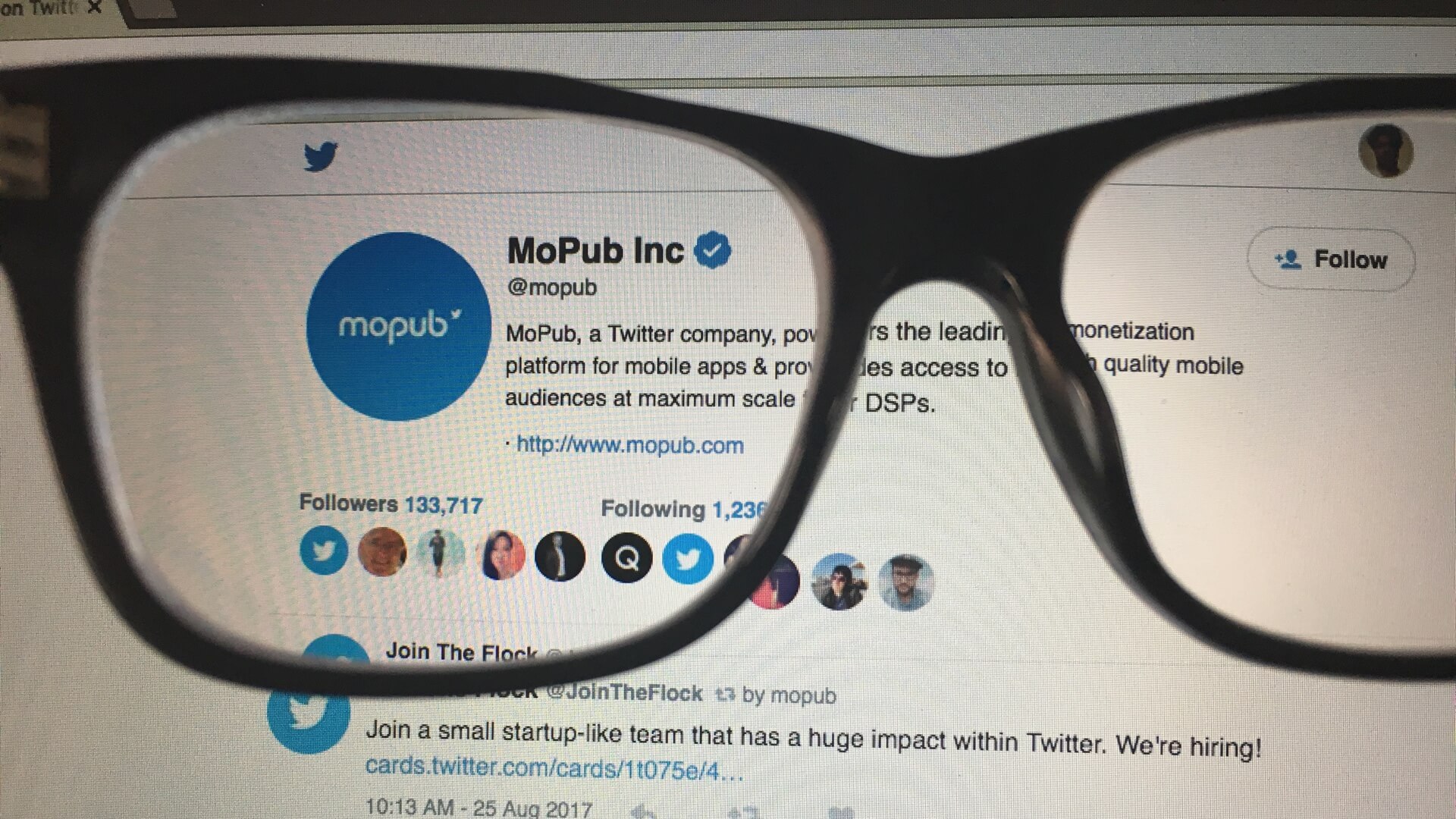Twitter’s MoPub adds third-party viewability measurement thru Moat, Integral Ad Science
MoPub’s 49,000-plus app publishers can enable their ads’ viewability to be tracked, and brands will be able to buy measurable inventory only.

Brands increasingly want to know that the ads they paid for had a chance to be seen, even on the small screen. So Twitter-owned mobile ad exchange MoPub is joining the roster of ad sellers enabling brands to independently measure their ads’ viewability.
MoPub is rolling out a way for advertisers to track how much of their in-app mobile ads were seen and for how long through third-party measurement firms Integral Ad Science (IAS) and Moat, the company announced on Thursday.
The more than 49,000 publishers that use MoPub to sell ads within their mobile apps will have the option of allowing IAS and Moat to measure their ad inventory for viewability. That option will be enabled by default when publishers upgrade to MoPub’s latest software development kit (SDK), though publishers will be able to disable it if they choose.
To encourage publishers to enable viewability monitoring, MoPub plans to share results that other publishers have seen since allowing their in-app inventory to be measured. If that’s not enough to prod adoption, advertisers will have the option to limit their MoPub buys to inventory that can be measured for viewability. Advertisers will get reporting on what percentage of an ad was viewable and for how long.
MoPub’s head of commercial partnerships, Meridith Miller, said that adding native ad support requires extra work from MoPub, IAS and Moat that would have delayed the rollout. MoPub wanted to get out ahead of the fourth quarter, when advertisers spend the bulk of their ad budgets and developers issue major updates to their apps to coincide with new phone and operating system releases.
While Miller didn’t have a timeline for when native ad support would be added, it is “absolutely the next priority,” she said.
Miller declined to say what share of ad impressions sold through MoPub currently meet the Media Rating Council’s viewability standards.
A major challenge in implementing third-party viewability measurement for in-app ads versus web ads is that implementation is more dependent on the publishers, said Miller. “With web formats, whether it’s mobile or desktop, the measurement provider just leverages a pixel or a tag, depending on what that particular measurement provider uses; that’s essentially in the hands of the advertiser to run wherever, whenever they want. In-app formats can’t be measured as accurately, according to the MRC, without the presence of the SDK, which is why in-app [viewability measurement] has taken a bit longer from an adoption standpoint,” she said.
MoPub began working with Integral Ad Science and Moat nearly two years ago to enable viewability measurement across its exchange, said Miller. The process of vetting various measurement firms took around six to eight months.
Miller didn’t say when MoPub would add other viewability measurement firms but added that the company supports the IAB Tech Lab’s open-source, standardized SDK for mobile measurement. Developers can implement the SDK to support ad monitoring from various measurement vendors.
Contributing authors are invited to create content for MarTech and are chosen for their expertise and contribution to the search community. Our contributors work under the oversight of the editorial staff and contributions are checked for quality and relevance to our readers. MarTech is owned by Semrush. Contributor was not asked to make any direct or indirect mentions of Semrush. The opinions they express are their own.
Related stories